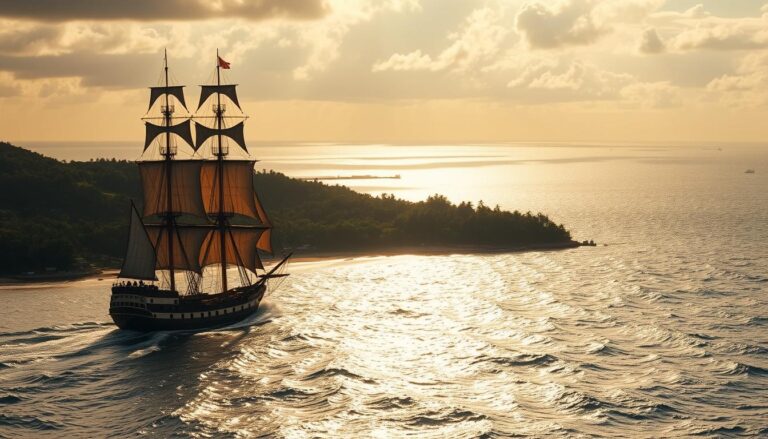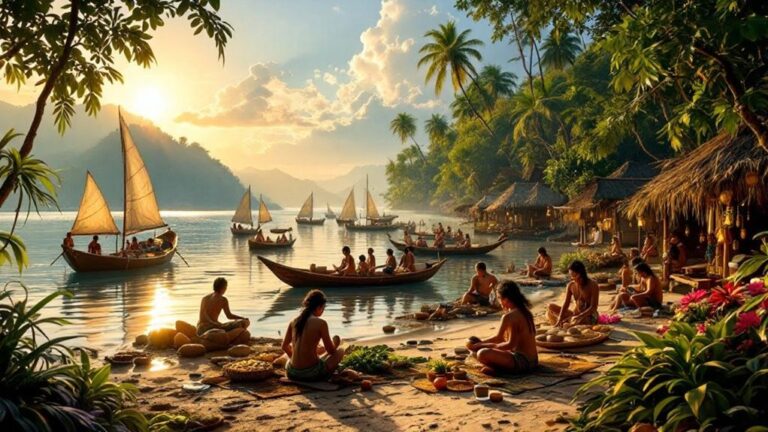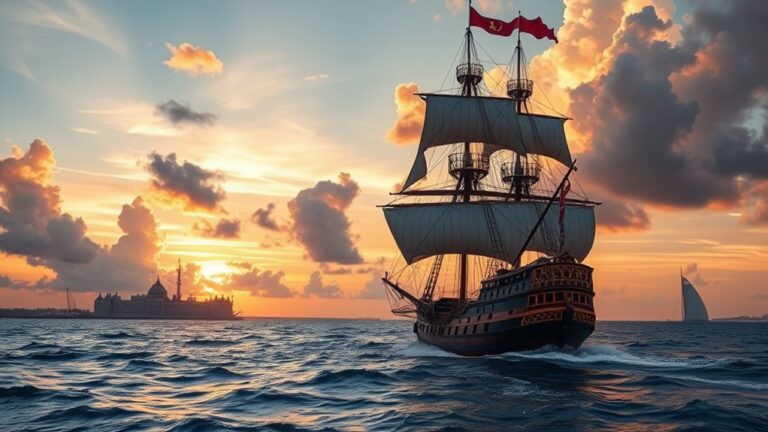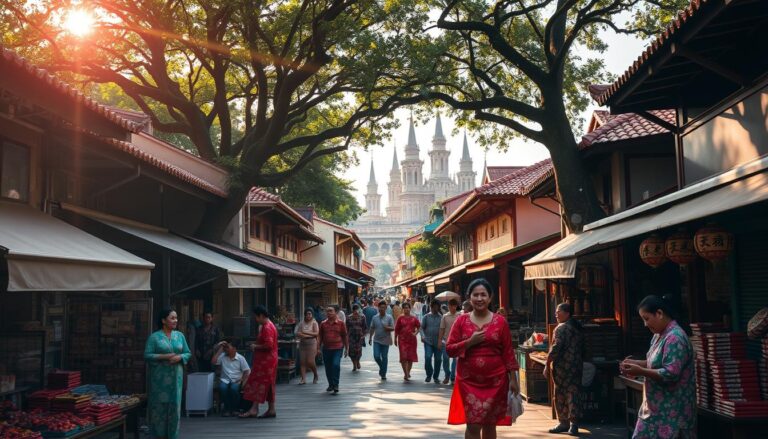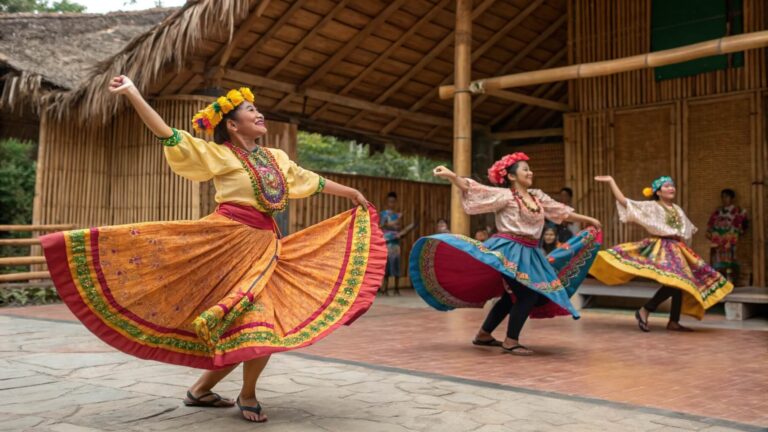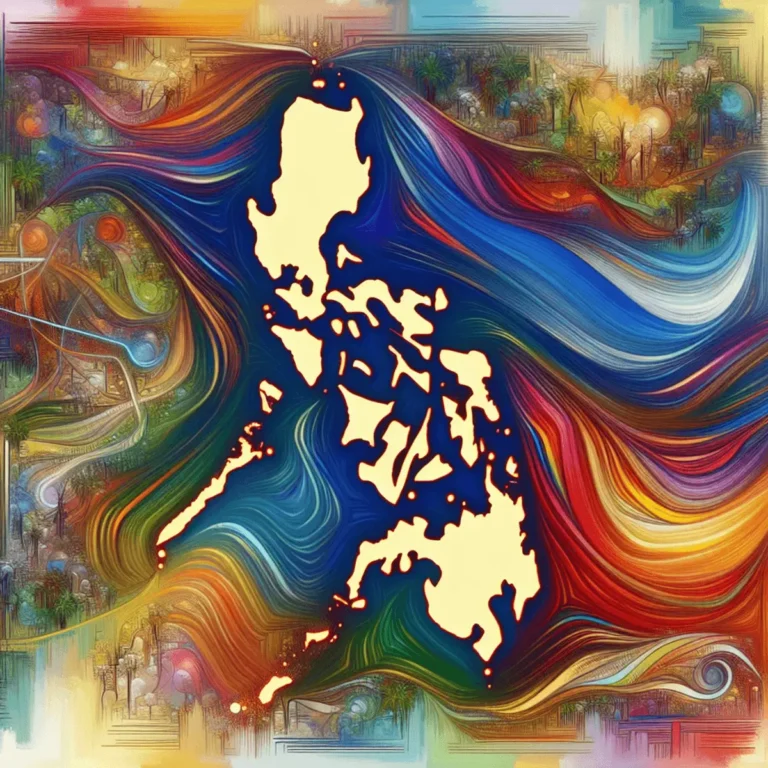Untold Stories: Filipino Sailors on Manila Galleons
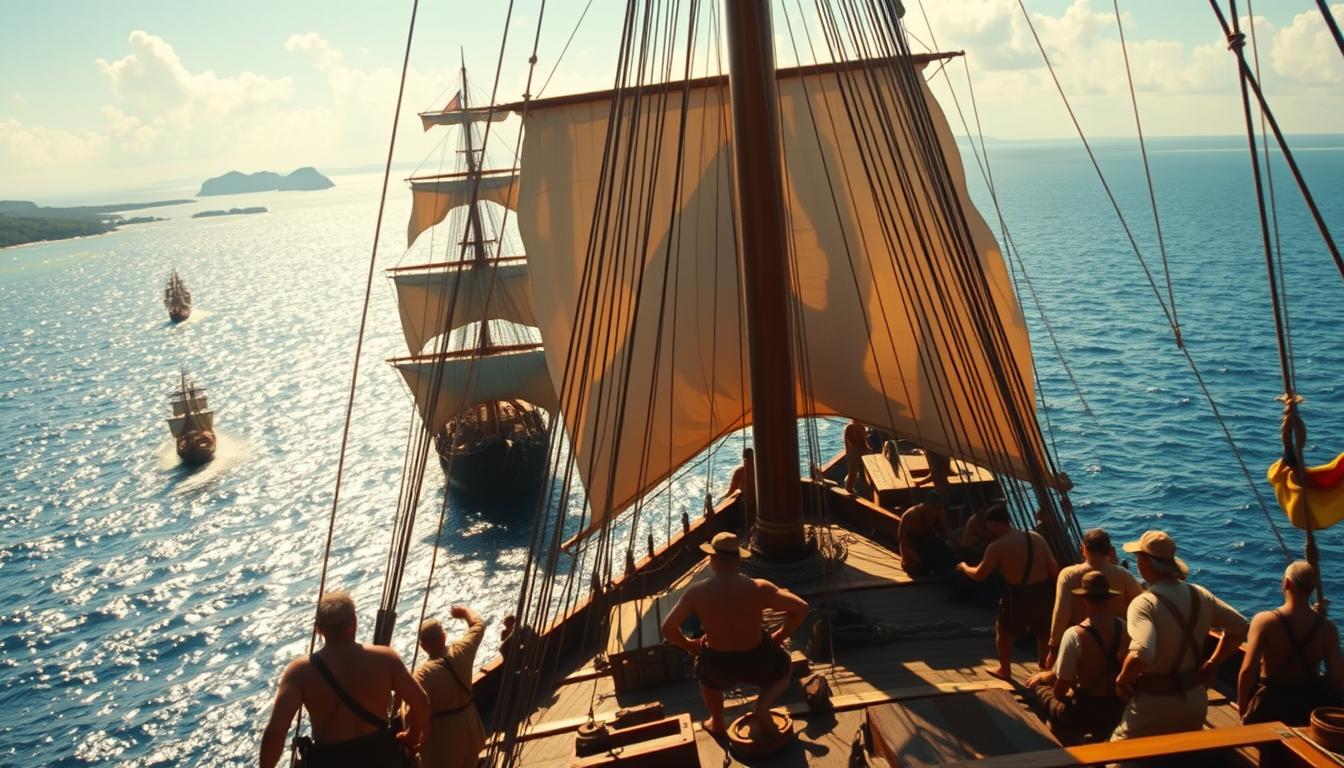
For over 250 years, massive wooden vessels crossed the Pacific Ocean, bridging continents and shaping global history. The Manila galleon trade connected Asia with the Americas from 1565 to 1815, creating a web of cultural and economic exchange. These journeys relied on skilled native crews who braved deadly storms, pirate raids, and months of isolation at sea.
Though often overlooked, these maritime workers formed the backbone of the galleon trade. Their expertise in navigation and shipbuilding ensured the survival of voyages spanning 15,000 kilometers. Cargo holds brimmed with silk, spices, and silver, but the true treasure lay in the blending of traditions between distant lands.
The ships themselves became floating symbols of resilience. Crews faced harsh conditions—malnutrition, disease, and cramped quarters—yet their stories shaped communities from Acapulco to Louisiana. This article uncovers their legacy, exploring how these journeys transformed trade, culture, and identity across oceans.
Key Takeaways
- The Manila-Acapulco trade route operated for 250 years, linking Asia and the Americas.
- Native seafarers possessed critical skills in navigation and ship management.
- Voyages lasted up to six months, with crews enduring extreme physical hardships.
- Goods like Chinese silk and Mexican silver fueled global economic networks.
- Cultural exchanges influenced food, language, and traditions in port cities.
- Filipino sailors established early settlements in regions like California.
Historical Context of the Manila Galleon Trade
Navigational breakthroughs in the Pacific Ocean paved the way for one of history’s longest-running trade networks. Spanish explorer Miguel López Legazpi established Manila as a strategic hub in 1565, while navigator Andrés de Urdaneta cracked the return route mystery. Their teamwork created a maritime highway between Asia and the Americas lasting 250 years.
Origins and Early Voyages
The first galleon trade expeditions faced brutal challenges. Ships battled unpredictable currents and months-long voyages with dwindling supplies. Urdaneta’s 1565 tornaviaje route used Pacific wind patterns to enable reliable return trips—a feat revolutionizing global commerce.
Spanish Crown’s Strategic Vision
Madrid tightly controlled the Manila-Acapulco route, funding ship construction and securing trading rights through treaties like Zaragoça. Crew members from diverse backgrounds managed these floating markets, carrying silver west and silk east. Annual voyages followed strict schedules dictated by seasonal winds.
This transoceanic network transformed port cities into cultural melting pots. The Spanish Crown’s gamble on Pacific trade routes reshaped economies across three continents, proving the value of maritime innovation.
The Life and Role of Filipino Sailors on Manila Galleons
Working aboard these vessels demanded extraordinary resilience. Crew members slept in shared spaces no larger than coffins, while performing backbreaking tasks from dawn until dusk. Their expertise kept ships operational through typhoons and calms alike.
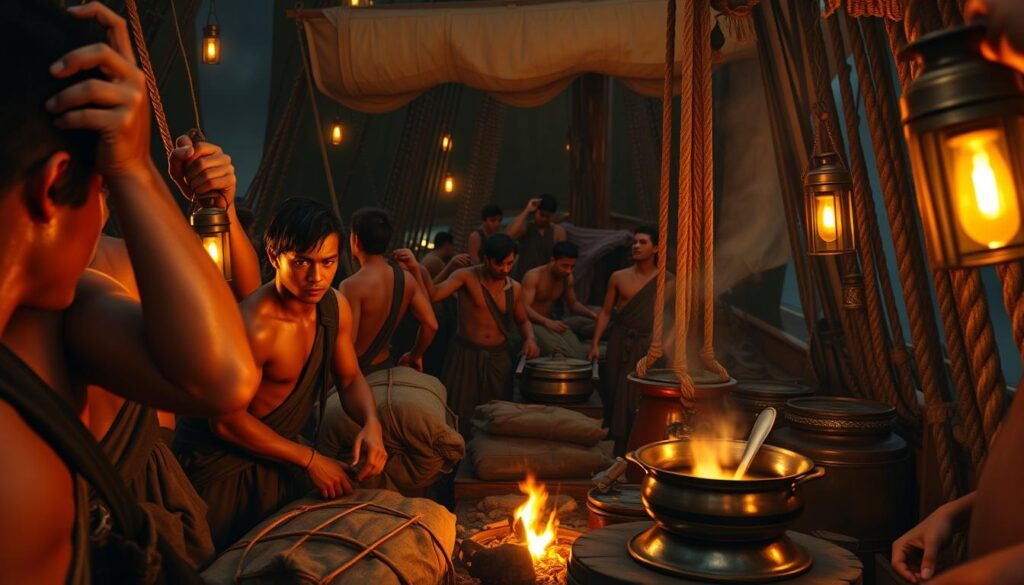
Everyday Challenges and Triumphs
Meals often consisted of stale biscuits and salted meat, leading to widespread malnutrition. One sailor’s journal noted: “We ate rats when the barrels emptied.” Despite this, crews developed inventive cooking methods using Pacific fish and traded spices.
| Challenge | Adaptation | Outcome |
|---|---|---|
| Crowded decks | Shift rotations | Reduced conflicts |
| Disease outbreaks | Herbal remedies | Lower mortality |
| Navigation errors | Stellar mapping | Faster routes |
Many developed unique skills during their time at sea, like reading ocean currents through bird movements. These abilities made them irreplaceable on the Acapulco-Manila route. Their stories later inspired folk songs about ocean guardians.
Though the galleon trade exploited many, it also created unexpected opportunities. Some used their earnings to build schools in coastal villages. Others blended traditions from different ports into new art forms still celebrated today.
Construction and Technology of Manila Galleons
Shipyards in the Philippine Islands hummed with activity as craftsmen transformed local resources into floating fortresses. Built primarily in Cavite, these vessels combined Spanish naval architecture with indigenous materials like Philippine teak—a hardwood resistant to rot and shipworms. This fusion created ships capable of surviving six-month journeys across the Pacific.
Innovative Shipbuilding Techniques and Materials
Builders used mortise-and-tenon joints reinforced with Chinese iron nails, creating watertight seals. The table below shows key materials and their purposes:
| Material | Source | Advantage |
|---|---|---|
| Teak wood | Luzon forests | Resisted decay |
| Manila hemp | Abacá plants | Saltwater-proof ropes |
| Cotton sails | Ilocos region | Withstood typhoons |
Adaptation to Pacific Conditions
Designers raised hulls by 1.5 meters compared to European models, preventing waves from swamping decks. Multiple masts allowed crews to adjust sails quickly when storms struck. One Spanish inspector noted: “Their curved prows slice through swells like blades through silk.”
These innovations let the galleon trade thrive despite the Pacific’s fury. Ships built with local expertise regularly outlasted their expected 20-year service life, proving the effectiveness of blended construction methods.
Navigational Routes and Pacific Trade Dynamics
The success of transoceanic voyages hinged on reading the ocean’s hidden language. Navigators decoded wind whispers and wave rhythms to carve paths across Earth’s largest water expanse. Their charts balanced speed with survival—a delicate equation refined over 250 years.
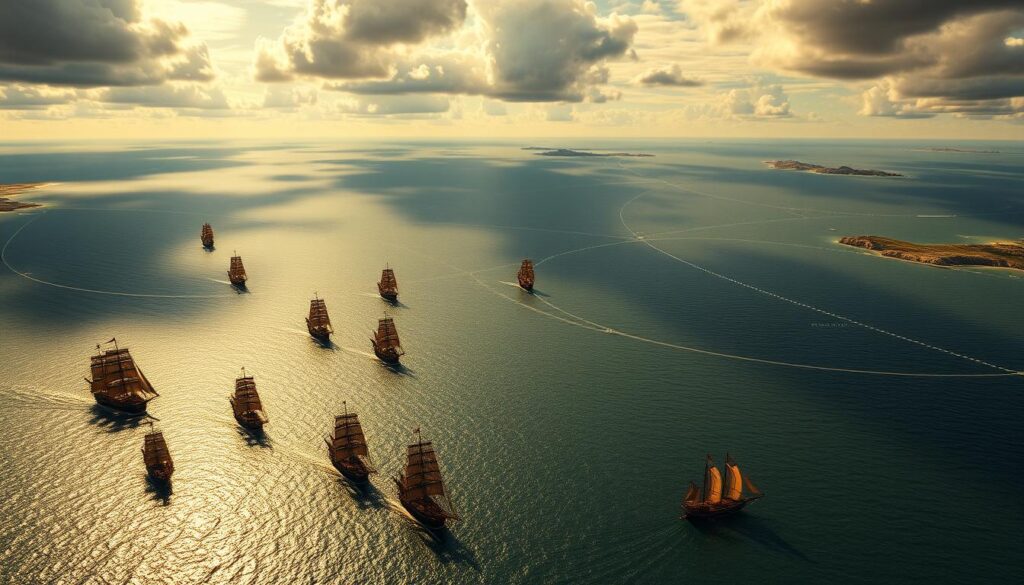
Key Maritime Routes and Wind Patterns
Two primary corridors dominated the galleon trade. The westward route from Acapulco rode the North Equatorial Current, while returning ships harnessed the Kuroshio Current’s powerful flow. Seasonal winds dictated departure times—April for Mexico-bound vessels, June for Asia returns.
Critical waypoints shaped these journeys:
- Guam’s shores provided fresh water after 8-week crossings
- The Luzon coast served as final checkpoint before Manila
- California’s foggy headlands warned of approaching land
By the 17th century, pilots could predict ocean behaviors with startling accuracy. One logbook noted: “The sea winks through cloud patterns—north winds mean smooth sailing for three days.” This environmental mastery let galleons shave weeks off initial route times.
Yet dangers persisted. Ships often drifted hundreds of miles off course when encountering typhoons. The 1705 San Felipe disappearance proved even seasoned crews couldn’t outwit every storm. These risks forced constant trade adjustments—slower speeds for safety versus faster trips for profit.
Daily Life Aboard the Galleons
Life at sea aboard these vessels revolved around strict hierarchies and relentless labor. Crews followed rigid schedules to manage sails, repair rigging, and pump water from leaky hulls. Survival depended on teamwork, with seasoned sailors mentoring apprentices in celestial navigation and storm tactics.
Routine, Duties, and Survival at Sea
Dawn began with a boatswain’s whistle signaling shift rotations. Pages scrubbed decks while carpenters patched storm damage. During emergencies like typhoons, order collapsed into chaos. A 17th-century journal entry reveals: “Men scrambled like ants as waves swallowed the forecastle.”
Apprentices learned seamanship through repetitive tasks—tying knots, adjusting sails, and charting stars. These skills proved vital during return voyages, when seasoned crews could halve travel time through optimized routes.
Food, Health, and Living Conditions
Rations dwindled rapidly on six-month expeditions. Crews supplemented stale biscuits with flying fish caught mid-voyage. By week twelve, weevils infested flour barrels, forcing sailors to sift meals through cloth filters.
Scurvy ravaged ships despite herbal remedies. Surgeons treated bleeding gums with citrus traded in Guam. Overcrowded berths bred typhus, claiming up to half the crew on early expeditions. Later voyages prioritized lime stocks and airing sleeping quarters—adaptations that slashed mortality rates by 1740.
Interactions, Crew Diversity, and Cultural Exchanges
Floating microcosms of global cultures, these ships became laboratories of human connection. Crews from distant lands shared cramped quarters for months, blending languages, recipes, and customs. This diversity sparked innovations that reshaped societies across the Pacific.
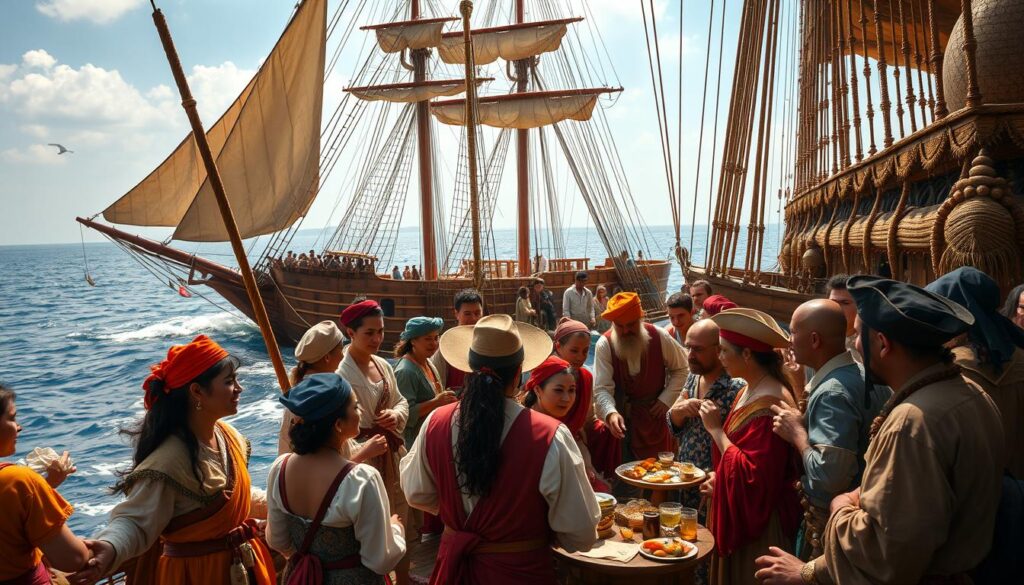
Cross-cultural Encounters and Adaptations
Ship rosters read like world maps—native boatwrights worked alongside Spanish soldiers, while Chinese merchants traded stories with Mexican navigators. Shared challenges forged unexpected alliances. A 1632 logbook entry reveals: “The Malay cook taught us to use coconut milk against scurvy—we showed him how to salt cod.”
| Role | Cultural Contribution | Lasting Impact |
|---|---|---|
| Filipino riggers | Knot-tying techniques | Improved global sailing methods |
| Spanish gunners | Metalworking skills | Enhanced ship defenses |
| Mexican traders | Chocolate preparation | New food traditions |
Port stops accelerated cultural blending. In Guam, crews exchanged fishing methods with CHamoru communities. These interactions often produced hybrid tools—like Filipino-Spanish compasses using local magnetic stones.
Traditional practices thrived through necessity. Sailors used monsoon prediction methods from Asian colonies to time departures. This fusion of knowledge made the galleon trade route safer and more efficient over time.
Languages evolved aboard ship. A pidgin dialect mixing Tagalog, Spanish, and Nahuatl emerged for daily commands. This linguistic cocktail later influenced port city slang from Acapulco to Cebu.
Economic Impact and Trade Commodities
The Manila galleon network became history’s first global economic engine, moving wealth across oceans like blood through veins. Ships carried silver from Mexican mines to Asian markets, where its value tripled overnight. This metallic river funded empires and sparked new industries worldwide.
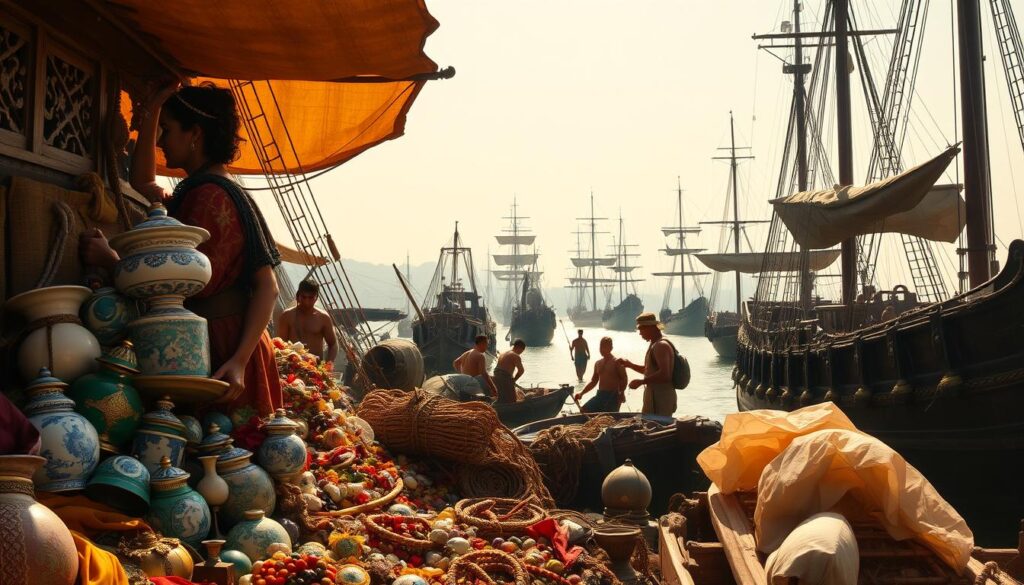
The Flow of Silver, Spices, and Luxurious Goods
Vessels brimmed with treasures that transformed societies. A single galleon might carry:
| From Asia | From Americas | Market Value Increase |
|---|---|---|
| Chinese silk | Mexican silver | 400% |
| Philippine spices | Peruvian cocoa | 220% |
| Indian cotton | Chilean copper | 180% |
Miguel López Legazpi’s vision created this trade superhighway. His 1570 deal with Chinese merchants secured 30 tons of silk annually. Crews braved disease-ridden ports to load goods, knowing one successful journey could yield 2 million pesos.
Local Markets and Global Profit Margins
Acapulco’s markets ballooned as goods moved inland. Mule trains carried Asian luxuries to Mexico City, where prices doubled weekly. Spanish records show:
- 400 million pesos shipped between 1570-1840
- 1-in-3 European nobles wore Chinese silk
- Spice prices dropped 60% in Mediterranean markets
This wealth reshaped colonial policies. Spain restricted galleon voyages to control silver flows, while Asian rulers stockpiled resources as economic shields. The route‘s legacy lives in modern trade networks still chasing those historic profit margins.
Legacy of the Galleon Trade in Philippine and American Histories
Centuries-old connections between Asia and the Americas continue shaping identities across continents. From Louisiana’s bayous to Luzon’s shores, communities preserve stories of maritime pioneers who transformed global exchange.
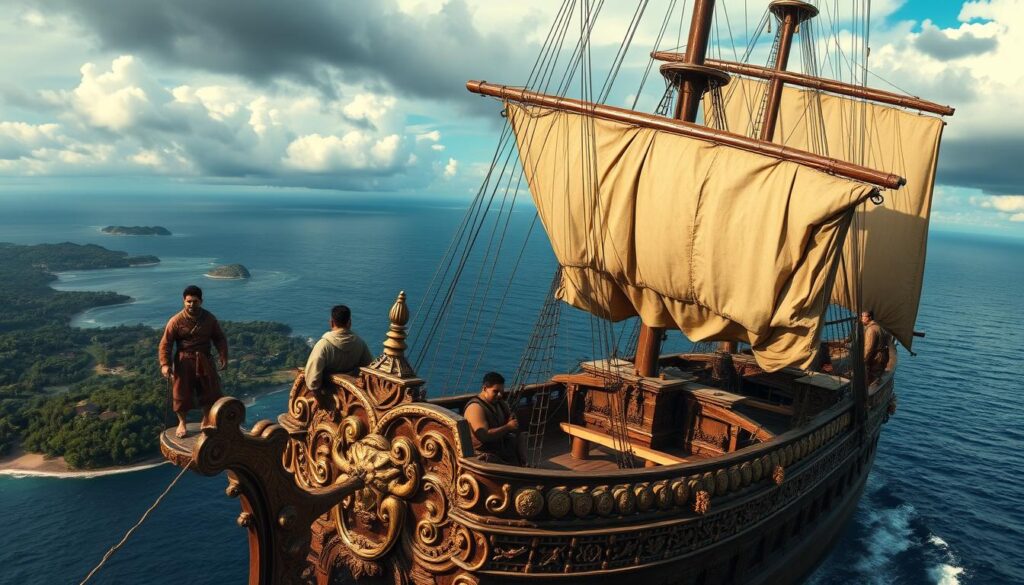
Cultural Threads Woven Across Oceans
Saint Malo, Louisiana’s first Asian settlement, began with crew members who jumped ship in the 1760s. Their descendants still celebrate traditions blending coconut wine recipes with Acapulco fishing techniques. Annual festivals in the Philippines feature morion masks—a fusion of Spanish armor designs and indigenous woodcarving.
Stones That Speak Across Time
Bronze plaques along Mexico’s coast mark key ports of the historic route. In Cavite, shipyard ruins now host museums displaying silver coins and navigational tools. A curator notes: “These artifacts show how ordinary people built bridges between worlds.”
Schools in both nations teach the trade’s impact through interactive exhibits. Louisiana’s “Galleon Days” event features boat-building workshops using 18th-century techniques. These efforts ensure future generations remember the resilience and ingenuity born from transoceanic journeys.
Conclusion
The galleon trade redefined global connections through daring voyages that fused continents. Crew members from diverse backgrounds mastered treacherous seas, their resilience fueling an economic network spanning three continents. Their journey reshaped markets and cultures—silver pesos funded empires, while spices transformed diets from Mexico City to Madrid.
Innovations born at sea still echo today. Navigators charted safer routes using indigenous knowledge, while shipbuilders blended materials to withstand Pacific storms. These advances laid groundwork for modern maritime technology, proving collaboration across cultures drives progress.
From Louisiana’s bayous to California’s shores, the trade’s legacy thrives. Early settlements like Saint Malo became cultural crossroads, blending traditions that endure in festivals and cuisine. Historical markers now honor these pioneers, ensuring their courage isn’t forgotten.
As we preserve these stories, they remind us: global exchange begins with human connection. Museums and schools continue uncovering artifacts from sunken ships, inviting new generations to explore this pivotal chapter. Their voyages teach timeless lessons about innovation through adversity—a compass guiding our shared future.

